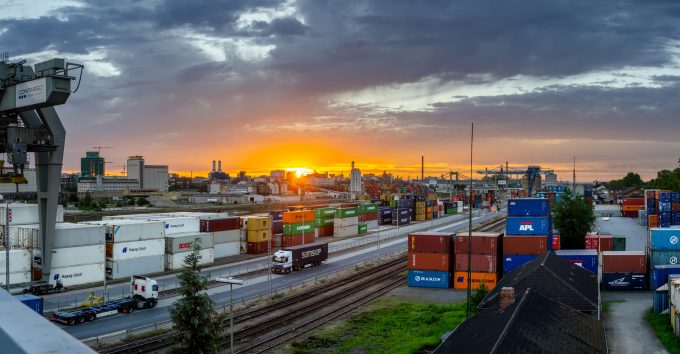Study reveals firms not keeping pace with digital supply chain development
Companies are failing to tackle the new demands of supply chain management in-house, according to ...
UPS: MULTI-MILLION PENALTY FOR UNFAIR EARNINGS DISCLOSUREWTC: PUNISHEDVW: UNDER PRESSUREKNIN: APAC LEADERSHIP WATCHZIM: TAKING PROFITPEP: MINOR HOLDINGS CONSOLIDATIONDHL: GREEN DEALBA: WIND OF CHANGEMAERSK: BULLISH CALLXPO: HEDGE FUNDS ENGINEF: CHOPPING BOARDWTC: NEW RECORDZIM: BALANCE SHEET IN CHECKZIM: SURGING
UPS: MULTI-MILLION PENALTY FOR UNFAIR EARNINGS DISCLOSUREWTC: PUNISHEDVW: UNDER PRESSUREKNIN: APAC LEADERSHIP WATCHZIM: TAKING PROFITPEP: MINOR HOLDINGS CONSOLIDATIONDHL: GREEN DEALBA: WIND OF CHANGEMAERSK: BULLISH CALLXPO: HEDGE FUNDS ENGINEF: CHOPPING BOARDWTC: NEW RECORDZIM: BALANCE SHEET IN CHECKZIM: SURGING

Trade patterns are expected to change, as recent economic and geo-political shocks have exposed weaknesses in supply chains.
In particular the impact has been the sourcing of goods, according to the latest McKinsey Global Institute (MGI) report on globalisation.
The Complication of Concentration in Global Trade says that, in a highly interconnected global economy, every region relies on imports of critical goods and none can be considered self-sufficient.
With such inter-dependency, supply chains evolved “in the most efficient manner”, but major disruptions over the past three years have highlighted their vulnerability.
“Firms and policy makers alike are examining where inputs come from and, in some cases, are contemplating reconfiguring or even breaking certain long-standing trade ties,” it says.
According to the report understanding national value chains on a granular level is critical to developing alternatives, and stresses that not all concentrated relationships create vulnerabilities, and not every product can be substituted for an alternative.
“But understanding country-level concentration will help business leaders and policymakers to better gauge their exposure to country-level risks, such as those that may arise from geography-specific shocks (for example, natural disasters and disease outbreaks) or policy-related shocks.”
Critical to shoring-up the supply chains of the future is for governments and businesses to properly understand the nature of their interdependencies, by assessing each component and looking at the “levels of concentration and dependency, the components’ criticality and the reliability of the economies from which these components are sourced”, it explains.
Moreover, MGI says “‘scenario analysis” can identify corelated risks that can take place in parallel, such as Russia’s invasion of Ukraine that disrupted energy and agricultural trades.
And a portfolio of actions could help speed-up the decision-making process, the report suggests. Decision makers should “double-down on concentrated sources that offer a competitive advantage”. Alternatively, if there is a risk associated with a particular concentrated supply, MGI suggests the decision-maker may choose to decouple from that relationship.
Finally, diversification can be beneficial for concentrated trade that is driven by economy-specific factors. Or, where a source is globally concentrated, alternative solutions such as partnerships could be considered.
It sums up: “By having a clear-eyed view of concentration, decision-makers can decide when and where to double-down, decouple, or diversify, and how to reimagine rather than retreat from their global footprints. The benefits of doing so do not solely relate to managing risk. Many economies may find new opportunities from the diversification of global trade, enabling more participation across the globe.”
Comment on this article